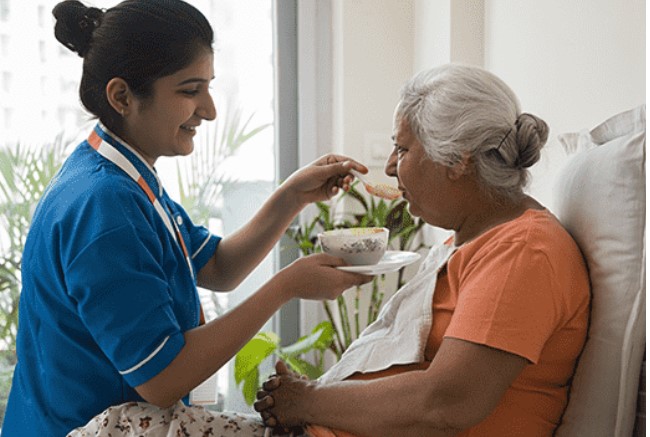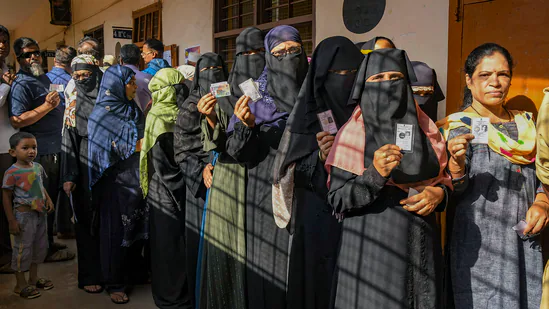Homecare is a rich sector with growing pains in India
Even though the large part of the population is dependent on the government healthcare system the private market is growing exponentially, and so is the important homecare sector
-
Women from small town who come from difficult background are happy to do babycare or patient care and earn Rs 15,000 – Rs 18,000 per month. PHOTO: FREEPIK
Nurses from India for several decades have been the caregivers for the
world, service-oriented men and women initially from Kerala and later from the
rest of India, continue to care for the patients and elderly globally.
Back in India, healthcare for a 1.45 billion population is a herculean
task. Even though the large part of the
population is dependent on the government healthcare system the private market
is growing exponentially, and so is the important homecare sector.
Lifestyle diseases, the ageing population, an increase in chronic
diseases, shortage of hospital beds, nuclear families, higher disposable
income, access to alternate services, affordability, insurance coverage, and
technology have been instrumental in a massive boom in the homecare sector.
India's population is ageing rapidly with the number of people above 60
expected to reach 170 million by 2025.
The demographic shift has led to an increase in age-related diseases
such as diabetes, hypertension, arthritis, stroke, dementia, and Alzheimer’s,
which require ongoing care and management. The Indian healthcare system also
faces a significant shortage of hospital beds, with only 1.3 beds per 1,000
people, compared to the global average of 3.5 beds per 1,000 people. This
shortage has led to a substantial increase in demand for homecare services, as
patients prefer to receive care in the comfort of their own homes.
The homecare market in India is estimated to be worth USD 5.5 billion
and is expected to grow at a Compound annual growth rate (CAGR) of 20 per cent
over the next five years. This growth is driven by increasing demand for
homecare services, industry initiatives to promote homecare, and the entry of
new players into the market. Since homecare services are both medical and
non-medical assistance to patients in the comfort of their own homes, it
reduces the need for hospitalisation and improves health outcomes. The Indian
government has recognised the potential of homecare services and has introduced
initiatives to promote and regulate the sector. The Ministry of Health &
Family Welfare has established guidelines for homecare services, including
standards for quality, safety, and patient care.
But homecare sector is facing significant challenges:
There is a lack of financial incentives, subsidies, and tax benefits to
encourage investment in homecare. Even though homecare is growing and is
creating medical and non-medical jobs rapidly government has yet to recognise
it as a separate sector and extend benefits.
Lack of training for non-medical resources, caregivers, and other
healthcare is leading to a severe shortage of trained resources.
Inadequate medical insurance coverage for patients and lack of
additional statutory policy framework in the insurance coverage is making
homecare less accessible and less attractive to patients.
Public awareness campaigns from the government to educate people about
the benefits and importance of home care are almost non-existent.
Implementing policy changes in line with the governments globally to
suit to the changing dynamics of the homecare sector that can improve the
quality, accessibility, and affordability of homecare services, ultimately
benefiting all the stakeholders is much needed.
Healthcare services received at home from qualified nurses are exempt
from GST. The GST exemption is not extending it to non-medical people who also
provide important basic care, and this is a deterrent to the cost-sensitive
market.
Social security programmes such as the one implemented for gig workers
and newspaper delivery people by Karnataka government are also a requirement
for caregivers, as they may not get employment opportunities after the age of
45-47 years.
Homecare sector already has major private hospitals and some key players
like Health Vista, HCAH, Skawin, Care24, Athulya, and many more. They are
providing both short-term and long-term jobs for qualified nurses and for
people who are service-oriented but have only basic educational qualifications.
Women from small towns who come from difficult backgrounds are happy to
take care of babies and patients earns between Rs 15,000 to Rs 18,000 per month
rather than struggle doing odd jobs. Karnataka government has an opportunity to
provide General Duty Assistance (GDA) training for men and women who just have
basic educational qualifications and enhance their opportunity to get jobs in
the homecare sector.
The population of India is both its biggest strength and weakness.
Indians are becoming a global force as they make the world a better place, but
our states and Union government policies and strategic interventions lack the
efficacy, accountability, and speed to create a gold standard organisations in
every sector. This is inadvertently making job creation a burden for
entrepreneurs. India needs to focus a lot more on the healthcare industry,
robust infrastructure, and access to quality services. Hence the governments
must scrub-up and provide a patient and caregiver-friendly framework for the
homecare sector, and not put a breathing sector on a ventilator.
Author is a Mentor at Skawin Medical &
Healthcare
Leave a Reply
Your email address will not be published. Required fields are marked *




















